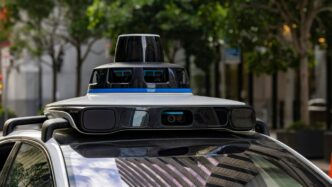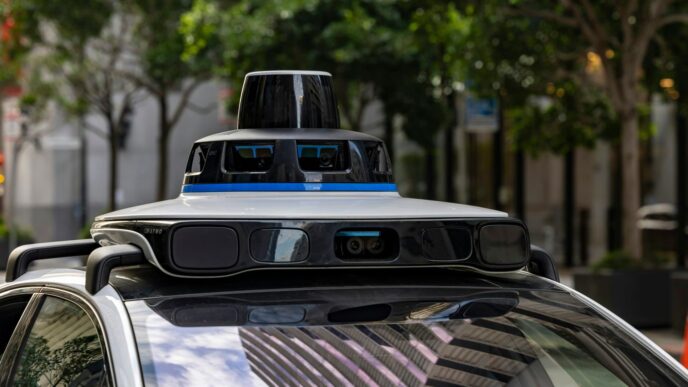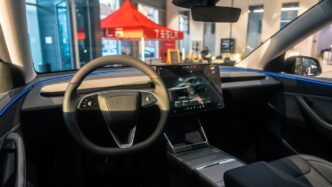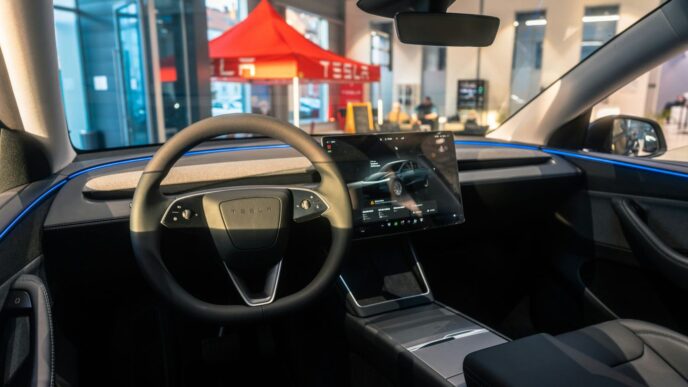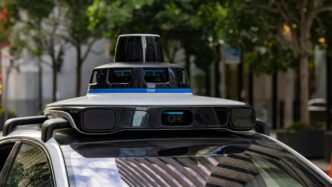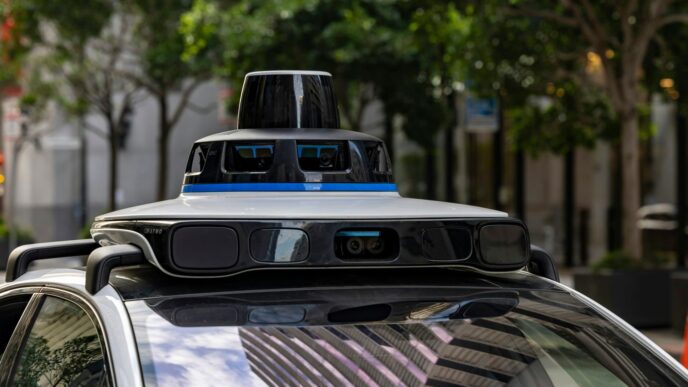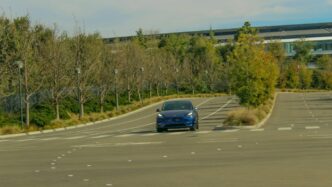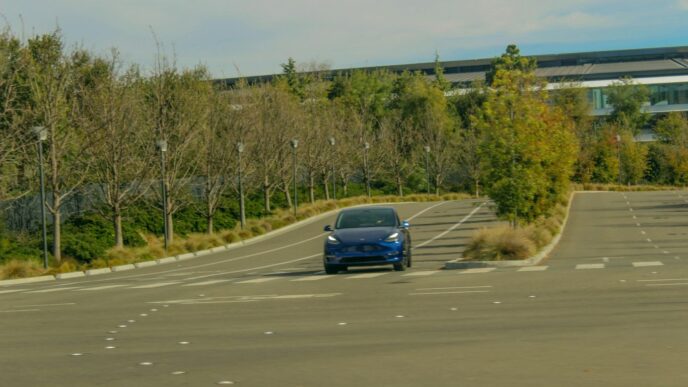Pony AI Advances Autonomous Trucking with Mass Production Plans
Pony AI is really pushing forward with its autonomous trucks, and it looks like they’re serious about making a lot of them. They’ve teamed up with Sany and Dongfeng, two big names in the truck manufacturing world, to get these self-driving rigs rolling off the assembly line. This isn’t just a small pilot program; we’re talking about plans for thousands of units per year, with the first trucks expected to hit the road in 2026. It’s a pretty big step towards making driverless trucks a common sight.
Sany and Dongfeng Partner for Large-Scale Autonomous Truck Production
So, Pony AI isn’t building these trucks themselves. They’re working with Sany and Dongfeng, who know how to build trucks. This partnership means they can focus on the self-driving tech while their manufacturing partners handle the actual vehicle production. The goal is to produce these autonomous trucks at a scale of thousands annually. It’s a smart way to get these advanced vehicles out there faster.
Gen-4 System Promises Cost Reduction and Efficiency Gains
The tech behind these trucks is Pony AI’s Gen-4 system. They’ve apparently made it much cheaper to build, about 70% less expensive than their older systems. This is partly because they’re using parts that are already proven in their robotaxi business. That makes sense, right? Use what works and what you already have. They’re also talking about big efficiency boosts for logistics companies. For instance, their ‘1+4’ platooning idea, where one truck drives and four follow behind, could cut freight costs by almost 30% and really boost profits. That’s a huge deal for the trucking industry.
Enhanced Safety and Reliability Features in New Autonomous Trucks
Safety is always a big question with self-driving tech, and Pony AI seems to be addressing that. They’re using a lot of the same safety features that are in their latest robotaxis. The Gen-4 system is designed to be super reliable, with backup systems for pretty much everything – steering, braking, power, you name it. They’re aiming for a long service life, too, with the system designed to last for a million kilometers. It sounds like they’re putting a lot of thought into making these trucks safe and dependable for long-haul trucking.
Scania and Plus Showcase Precision in Autonomous Trucking Stunts
You know, sometimes you see something and think, ‘No way that’s possible.’ That’s kind of how I felt watching this stunt with Scania’s autonomous trucks and a mountain biker. It sounds like something out of a movie, right? A professional biker, Matt Jones, actually jumped between two tractor-trailers that were moving towards each other. This wasn’t just a trick; it was a serious demonstration of how precise autonomous driving can be.
SuperDrive System Enables Unprecedented Maneuvers
So, how did they pull this off? It all came down to the tech. Scania provided the trucks, but the brains behind the autonomous driving was Plus’s SuperDrive system. This system is designed to be super accurate, like, down to the centimeter level. They needed it to be that good because the gap between the trucks was tiny – only about 8 meters. The trucks had to move in perfect sync, and the SuperDrive system had to keep them on their exact path, even with all the other moving parts.
Autonomous Trucks Demonstrate Sub-Decimeter Path Holding
Let’s talk numbers for a second. The SuperDrive system managed what they call ‘sub-decimeter path holding.’ Basically, it means the trucks stayed within a few inches of their intended line. This level of accuracy is pretty wild when you think about it. It’s not just about staying on the road; it’s about being able to control the truck with incredible exactness. This kind of precision is what made the stunt possible, allowing for that super-tight window for the biker to pass through. It took months of practice and testing to get it right, with the trucks needing to adjust to the speed of the biker’s tow vehicle in real time.
Future Applications for Factory-Installed Autonomous Trucks
What’s really interesting is that this isn’t just a one-off stunt. The SuperDrive system Plus is using is the same one they’re working on for trucks that will be built with autonomous capabilities right from the factory. They’re aiming for these to be ready around 2027. Imagine trucks that are designed from the ground up to drive themselves. This stunt shows that the technology is getting there, proving it can handle complex situations with a high degree of safety and control. It makes you wonder what else these trucks will be able to do down the line.
Pony AI’s Gen-4 System: A Leap in Autonomous Truck Technology
Pony AI is really pushing the envelope with their new Gen-4 autonomous truck system. It’s not just an upgrade; it feels like a whole new ballgame for self-driving trucks. What’s cool is how adaptable it is. They designed it with a modular approach, meaning it can be fitted onto different truck models without a massive headache. This flexibility is a big deal for getting these trucks out there on the road.
Modular Design for Broad Vehicle Adaptability
One of the standout features of the Gen-4 system is its modularity. This means Pony AI can more easily integrate their technology into various truck chassis. Think of it like building with LEGOs – you can swap out pieces and connect them in different ways. This adaptability is key for working with different truck manufacturers and getting the system into more vehicles faster.
Automotive-Grade Components Drive Cost Efficiency
Pony AI is using components that are 100% automotive-grade, many of them borrowed from their successful robotaxi systems. This smart move helps cut down on costs significantly. They’re saying it’s about a 70% reduction in cost per vehicle compared to their older systems. Plus, using parts designed for cars means they’re built to last and meet high safety standards, which is exactly what you want when you’re talking about big trucks carrying loads.
Accelerating Commercial Driverless Operations
The whole point of the Gen-4 system is to speed up the real-world use of driverless trucks. Pony AI is working with companies like Sany and Dongfeng, and they’re aiming for mass production. The goal is to get these trucks operating commercially on a large scale. They’ve even talked about platooning solutions, where one human-driven truck leads a group of driverless ones. This could really cut down on shipping costs and make the whole logistics process more efficient. It’s a big step towards making driverless trucking a common sight.
Industry Collaboration Fuels Autonomous Truck Development
It’s pretty clear that no single company is going to figure out self-driving trucks all on its own. That’s why seeing big players team up is such a big deal for the future of hauling stuff. We’re seeing tech companies and truck makers working together, and it’s really speeding things up.
Pony AI Joins Forces with Leading Truck Manufacturers
Pony AI, a company that’s been making waves in the autonomous driving world, has partnered up with some heavy hitters in the truck manufacturing industry. They’re working with Sany and Dongfeng, two major Chinese truck makers. The goal? To get their latest autonomous driving system, called Gen-4, into actual trucks that can be mass-produced. This isn’t just a small pilot program; they’re talking about producing thousands of these trucks each year, with the first ones hitting the road around 2026. It’s a smart move because it means the technology gets tested and refined in real-world conditions much faster.
Focus on Chinese Market with Gen-4 Autonomous Trucks
Initially, this collaboration is really focused on the Chinese market. That makes sense, given the size of China’s logistics industry and the government’s push for new technologies. Pony AI’s Gen-4 system is designed to be adaptable, meaning it can be fitted onto different truck models, including electric ones from Sany and Dongfeng. They’re using parts that are already used in cars, which helps keep costs down and makes the trucks more reliable. Think of it like this:
- Modular Design: The system can be tweaked to fit various truck chassis.
- Automotive-Grade Parts: Using components proven in cars means better durability and lower manufacturing costs.
- Scalable Production: Working with established manufacturers allows for building trucks in large numbers.
Strategic Partnerships for Global Autonomous Trucking
While the initial push is in China, the implications are global. These partnerships are key to ironing out the kinks in autonomous trucking. It’s not just about the technology itself, but also about figuring out how to integrate it into existing logistics networks. Companies are looking at things like platooning, where a lead truck drives itself and others follow closely behind. Pony AI has even suggested that their ‘1+4’ platooning setup could cut down on costs per kilometer by a significant amount, maybe even close to 30%, and boost profits way up. That kind of efficiency is what the entire industry is chasing.
The Future of Logistics: Autonomous Trucks and Efficiency
It’s pretty wild to think about how much trucking is changing. We’re not just talking about incremental improvements anymore; we’re seeing a whole new way of moving goods. Autonomous trucks are really starting to show what they can do, and it’s all about making things faster and cheaper.
Platooning Solutions to Reduce Freight Costs
One of the big ideas making waves is platooning. Imagine a convoy of trucks, but instead of a bunch of drivers, only the lead truck has one. The others follow closely behind, almost like they’re attached. This isn’t just for show; it actually saves a ton of fuel because the trucks slipstream each other, cutting down on wind resistance. Pony AI has been testing a setup where one human-driven truck leads four driverless ones. They’re saying this could cut down freight costs by almost 30% and seriously boost profits. That’s a huge deal when you’re talking about moving stuff across the country.
Long Service Life for Autonomous Truck Systems
When you invest in new technology, you want it to last, right? These new autonomous systems are being built with durability in mind. Pony AI’s latest system, for instance, is designed to run for about 20,000 hours, which could mean up to a million kilometers of hauling. They’re using parts that are already proven in cars, which helps keep costs down and makes them more reliable. Plus, they’ve put in a lot of backup systems – think redundant steering, braking, and power – so if one thing glitches, another takes over. It’s all about making sure these trucks can keep rolling without a hitch.
Transformative Impact on Logistics Companies
So, what does all this mean for the companies that actually move freight? It’s a pretty big shift. With trucks that can operate more hours a day and more efficiently, logistics companies can move more goods with fewer resources. This could mean lower prices for consumers and better margins for businesses. It’s not just about saving money on fuel or labor, though. It’s about rethinking entire supply chains. We might see more predictable delivery times and the ability to handle goods that require very precise timing. It’s a whole new ballgame, and companies that adapt are likely to do really well.
Pony AI’s Robotaxi Success Paves Way for Trucking Advancements
It looks like Pony AI has been busy, and not just with their self-driving cars. You know, the ones you might see around some cities? Well, it turns out their work on those Robotaxis is actually helping them move forward with their big plans for autonomous trucks. They’ve hit some pretty good milestones with their Robotaxi service, which is great for them, but it also means they’re learning a lot that can be used elsewhere.
Profitability Milestones in Robotaxi Operations
Pony AI recently announced that their seventh-generation Robotaxis have started making money city-wide in Guangzhou. This is a pretty big deal because it shows their technology can work in the real world and actually be profitable. They’re aiming to have over 3,000 of these vehicles in their fleet soon, and they’ve brought in a good chunk of new money to help make that happen. This success isn’t just about the cars; it’s about proving the underlying technology works and can be scaled up.
Cost Reductions in Autonomous Driving Kits
One of the key things Pony AI is doing is making their self-driving technology cheaper. They’ve managed to cut the cost of their autonomous driving kits by a huge amount – around 70% compared to older versions. And they’re not stopping there; they expect to cut costs even more for future models. This focus on making the tech more affordable is exactly what’s needed to get autonomous trucks out on the road in large numbers. It means the expensive parts are becoming more accessible.
Scalable Expansion Fueled by New Capital
With the money they’ve raised, Pony AI is in a good position to grow. They’re not just talking about more Robotaxis; this financial backing is also supporting their move into the trucking world. The experience and cost savings they’ve gained from their Robotaxi operations are directly feeding into their autonomous truck development. This means their Gen-4 autonomous truck system, which uses many of the same automotive-grade parts as their successful Robotaxis, is built on a foundation of proven technology and cost efficiency. It’s like they’ve built a strong base with the taxis, and now they’re using that to build the trucks.
Wrapping It Up
So, what does all this mean for the future of trucking? It looks like autonomous trucks are really starting to move from just ideas to actual things on the road. Companies like Pony.ai are getting ready to make thousands of these trucks, aiming to cut down on costs and make deliveries faster. We’re seeing some pretty wild stunts, like jumping bikes through moving trucks, which shows just how precise this tech is getting, even if it’s not something you’d ever try yourself. While there’s still a ways to go before these trucks are everywhere, the progress is clear. It’s an exciting time to watch this industry change, and it seems like driverless big rigs are becoming less of a ‘what if’ and more of a ‘when’.



